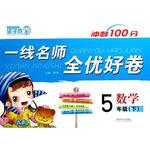题目内容
【题目】Batteries can power anything from small sensors to large systems. While scientists are finding ways to make them smaller but even more powerful, problems can arise when these batteries are much larger and heavier than the devices themselves. University of Missouri(MU) researchers are developing a nuclear energy source that is smaller, lighter and more efficient.
“To provide enough power, we need certain methods with high energy density (密度)”,said Jae Kwon, assistant professor of electrical and computer engineering at MU. “The radioisotope (放射性同位素) battery can provide power density that is much higher than chemical batteries.”
Kwon and his research team have been working on building a small nuclear battery, presently the size and thickness of a penny, intended to power various micro/nanoelectromechanical systems (MNEMS). Although nuclear batteries can cause concerns, Kwon said they are safe.
“People hear the word ‘nuclear’ and think of something very dangerous,” he said, “However, nuclear power sources have already been safely powering a variety of devices, such as pace-makers, space satellites and underwater systems.”
His new idea is not only in the battery’s size, but also in its semiconductor(半导体). Kwon’s battery uses a liquid semiconductor rather than a solid semiconductor.
“The key part of using a radioactive battery is that when you harvest the energy, part of the radiation energy can damage the lattice structure(晶体结构) of the solid semiconductor,” Kwon said, “By using a liquid semiconductor, we believe we can minimize that problem.”
Together with J. David Robertson, chemistry professor and associate director of the MU Research Reactor, Kwon is working to build and test the battery, In the future, they hope to increase the battery’s power, shrink its size and try with various other materials. Kwon said that battery could be thinner than the thickness of human hair.
【1】Which of the following is TRUE of Jae Kwon?
A. He developed a chemical battery.
B. He teaches chemistry at MU.
C. He made a breakthrough in computer engineering.
D. He is working on a nuclear energy source.
【2】Liquid semiconductor is used to ________.
A. reduce the damage to lattice structure
B. test the power of nuclear batteries
C. decrease the size of nuclear batteries
D. get rid of the radioactive waste
【3】According to Jae Kwon, his nuclear battery ________.
A. uses a solid semiconductor
B. will soon replace the present ones
C. could be extremely thin
D. has passed the final test
【4】The text is most probably a ________.
A. book review
B. science news report
C. newspaper ad
D. science fiction story
【答案】
【1】D
【2】A
【3】C
【4】B
【解析】本文为一篇说明文。本文介绍了介绍由美国密苏里大学研究者所开发的核能电池的情况。这种电池体积更小,能量更大。
【1】细节理解题。根据第三段的“Kwon and his research team have been working on building a small nuclear battery,”可知,Kwon 在研究制造一种小型的原子能电池,所以D项正确。
【2】细节理解题。根据第六段“The key part of using a radioactive battery is that when you harvest the energy, part of the radiation energy can damage the lattice structure(晶体结构) of the solid semiconductor, ”Kwon said, “By using a liquid semiconductor, we believe we can minimize that problem”可知,使用放射性电池的关键部分是,当你获取能量时,辐射能量的一部分会损坏固体半导体的晶格结构。通过使用液态半导体,相信可以最小化这个问题,也就是说减少晶格结构的损伤。故A项正确。
【3】细节题。根据文章最后一句Kwon said that battery could be thinner than the thickness of human hair.可知,Kwon说这种电池比人的头发都细,也就是这样的电池可能会非常薄。故C项正确。
【4】推理题。本文是关于新型的原子能电池的研究情况,其中涉及到高科技的核技术,那么最有可能是科技报告,故B正确。

 阳光同学一线名师全优好卷系列答案
阳光同学一线名师全优好卷系列答案